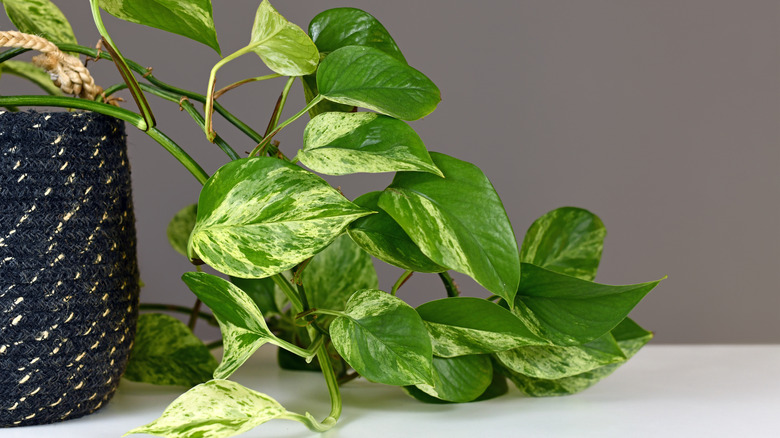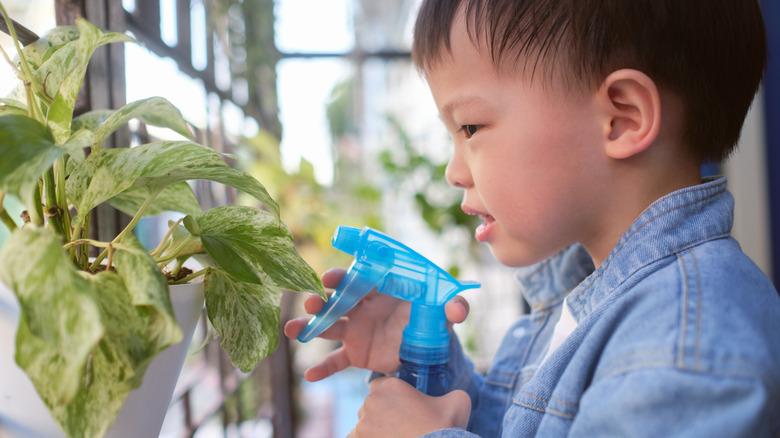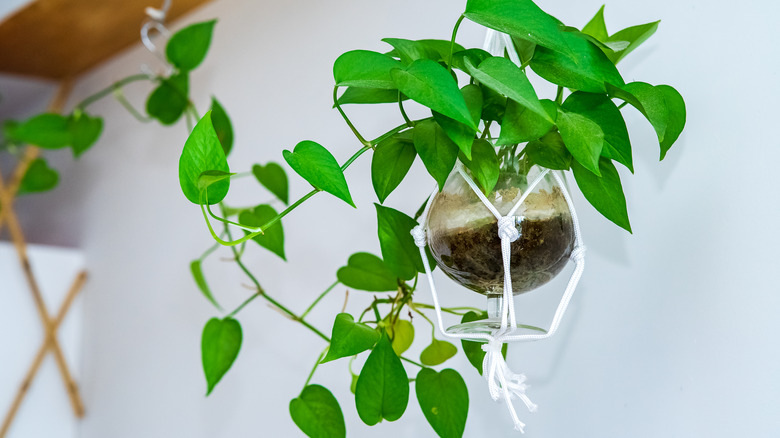Why You Should Keep Your Pothos Plants Away From Your Pets
Pothos are the quintessential houseplant, are easy to care for, and are known for their ability to add color, texture, and personality to any space. While they're low maintenance and visually appealing, they're also considered toxic due to the high concentration of calcium oxalate crystals in their leaves, stems, and roots. Ingesting pothos can cause oral irritation, excessive drooling, vomiting, and difficulty swallowing. While it's highly unlikely that ingesting pothos can be fatal, it's better to err on the side of caution. It will still cause extreme pain and discomfort and possibly do damage to the soft lining of the digestive tract. This goes for other types of houseplants, too, so always do your research before expanding your plant family.
It is important to note that pothos is not only toxic to dogs and cats but also other pets like birds, pocket pets, and other four-legged critters. This creeping vine is also toxic to humans, so if you have small children at home, it's best to keep pothos plants out of reach and ensure there's no easy access to them.
Symptoms of pothos ingestion
Pothos plants contain calcium oxalate crystals, which cause extreme burning in the mouth and throat. Ingestion can lead to dehydration and organ failure if not promptly addressed, and may require hospital care. The severity of pothos ingestion symptoms can vary in pets, but are pretty much the same. Because of the discomfort and irritation, you might see your pet excessively drooling and-or pawing at the mouth. Gastrointestinal upset, including vomiting and diarrhea, can occur as the body tries to eliminate the toxin. Keep in mind that certain animals, like rats and rabbits, are unable to vomit or "release pressure" and will exhibit their extreme pain through body movements. Other potential symptoms include difficulty breathing, loss of appetite, and lethargy. Swelling of the mouth, throat, and tongue can make eating, drinking, breathing, and swallowing difficult as well.
It's important to understand that the severity of these symptoms depends on the amount ingested and the individual animal's sensitivity. If you suspect your pet has ingested pothos, it's always a good idea to seek out veterinary care.
Treatment and prevention
After a pothos ingestion, it's recommended to first rinse and flush your pet's mouth thoroughly with water, followed by giving them calcium-rich foods such as milk or soft dairy, like cottage cheese or yogurt. These are known to help alleviate pain and provide relief. Always call your veterinarian to report the incidence as well — even if they decide a visit isn't necessary, they'll still want to put this information in your fur baby's chart.
One effective method to protect your pets is by placing pothos plants in areas that are inaccessible to both four-legged and two-legged inhabitants of your home. High shelves, like those used for storing cooking utensils, can prevent curious individuals from accidentally pulling on the vines (and also the whole plant). Displaying pothos plants in hanging planters that are strategically placed away from other furniture is also a convenient and eye-catching way to ensure they are out of any animal's reach. Remember to keep an eye on your pothos and remove any dead or dying leaves to prevent them from accidentally making landfall and ending up as someone's unintentional dinner.


